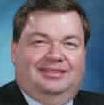
This blog focuses on my scholarship in my five research projects: learning assistance and equity programs, student peer study group programs, learning technologies, Universal Design for Learning, and history simulations. And occasional observations about life.
Employing an Effective Change Model to Implement Best Practices
College administrators have a wide variety of responsibilities that are demanding: budget manager, strategic planner, student learning leader, personnel manager, and catalyst for change. Change is often difficult not because of lack of interest by others, but rather because of the energy and resources needed for change itself. Every day new management books are being published with a subset focused on higher education management. A key issue for a successful leader is not only leading others to a desired outcome, but also understanding the complicated stages of change that must occur before arriving at that destination. Implementing best practices at an institution requires careful attention and support throughout the innovation cycle.
A classic model for organizational and personal change is provided by Kurt Lewin. Click on this link for another guide on his change model. Professor Kurt Lewin (1890-1947) was one of early leaders in social psychology and focused his research heavily on organizational dynamics. Lewin’s Force Field Analysis (1947, 1951) provides a model for understanding the forces that either foster or hinder change. He described a multi-stage process.
The first stage requires the early leaders of the innovation to help engender dissatisfaction with the present system. Lewin argued that people would not even consider change unless the status quo was demonstrated to be seriously lacking. Applying this principle to higher education, this activity might include reports about the number of students with disabilities enrolled on campus, drop-out rates for students, student satisfaction survey data, and so on.
The second stage occurs when people “unfreeze” from customary behaviors and implement new ones. Activities at this stage might include a few people at the institution experimenting with several practices as a pilot-test. Data are is collected from this pilot test, such as student survey data, changes in grade performance, and increase in utilization by students.
The next stage builds upon the pilot stage by the campus change agents, in this case senior student affairs administrators, presenting a comprehensive model for implementing the best practices. This stage requires not only advocacy from the administrators for change, but sustained attention and resources such as training.
The final stage, according to Lewin, is the most important and also the most challenging. “Refreezing” occurs when people have deeply adopted the new behavior and feel as comfortable with it as they were with the previous behaviors before the change model began. It requires continued support and rewards for people to continue the new behaviors. He argued that this stage is the one where well intentioned pilot programs sometimes are not continued. Applying this principle to postsecondary education, practices would include supplemental pay for additional work outside of the normal job scope or work-week, recognition of performing the new practices through the annual performance review system, and so on, etc. The new practices must not only be advocated, but ‘valued’ in a practical way from the perspective of the front- line implementers of the practice.
This comprehensive model of change requires not just advocating for adoption of the new practices. The entire cycle of change, especially the final stage of supporting ongoing implementation, is essential for systemic and sustained change. The four stages are arranged in a circle since change within an organization or for an individual is continuous. After reaching stage four of the process, the organization or individual needs to carefully reflect on their current performance indicators, engender dissatisfaction with the status quo, and engage in another round of quality improvement.
Following is a YouTube clip that illustrates some of the principles of Lewin's change process with the U.S. automobile companies and the consumer market.
Comprehensive theory of developmental education
Wambach, C., Brothen, T., & Dikel, T. N. (2000). Toward a developmental theory for developmental educators. Journal of Developmental Education, 24(1), 2-4, 6, 8, 10, 29.
The authors propose a comprehensive theory of developmental education which is based on developmental psychology. There are three basic concepts in the theory: demandingness, responsiveness, and self-regulation. Rather than operating with a "deficit model," this theory is rooted in developmental psychology which focuses on building the strengths of all students. A number of recommendations are provided for practical implementation of this theory in the classroom.
Stigma impact on students involved with developmental education
Pedelty, M. (2001). Stigma. In J. L. Higbee, D. B. Lundell, & I. M. Duranczyk (Eds.), 2001: A developmental odyssey. Warrensburg, MO: National Association for Developmental Education.
Thirty-eight students conducted ethnographic research among their peers at a developmental program within a large public university. The students found that many of their peers feel stigmatized. The author argues that stigmatization is an inevitable outcome of academic ranking and a result of the ideological narratives driving U.S. education. He proposes a "justice model" to deal with issues of academic stigma among students and faculty in developmental education programs.
Monograph on theories for developmental education
Lundell, D. B., & Higbee, J. L. Eds (2001). Theoretical perspectives for developmental education. Minneapolis, MN: Center for Research on Developmental Education, General College, University of Minnesota. Retrieved July 4, 2004, from: http://www.gen.umn.edu/ research/crdeul/publications.htm
This monograph provides nearly 20 articles in four sections: new and revised theories for developmental education; culture and constructivism; literacy and composition; and theories for math and science.
Critique of theories related to developmental education
Lundell, D. B., & Collins, T. (1999). Toward a theory of developmental education: The centrality of "discourse". In J. L. Higbee, & P. L. Dwinell (Eds.), The expanding role of developmental education (pp. 3-20). Morrow, GA: National Association for Developmental Education. Retrieved July 4, 2004, from: http://nade.net/documents/ mono99/mono99.1.pdf
After a review of various theories that have been used to define developmental education, the authors critique them regarding them. They found that most were theoretically underdeveloped. The authors recommend the idea of "Discourse" as articulated by James Paul Gee as a theory to guide developmental education.
Applying developmental theory to a math program
Kinney, D. P. (2001). Developmental theory: Application in a developmental mathematics program. Journal of Developmental Education, 25(2), 10-12, 14, 16, 18, 34.
The developmental theory concepts of self-regulation, demandingness, and responsiveness (Wambach, Brothen, and Dikel, 2000) are applied to a developmental mathematics program at the General College of the University of Minnesota.
Expanding the theory of developmental education
Higbee, J. L. (1996). Defining developmental education: A commentary. In J. L. Higbee, & P. I. Dwinell (Eds.), Defining developmental education (pp. 1-5). Morrow, GA: National Association for Developmental Education. Retrieved July 4, 2004, from: http://www. umkc.edu/cad/nade/nadedocs/96monpap/jhmpap96.htm
The author applies Chickering's Seven Vectors of College Student Development (1993) to understanding a theory of developmental education: developing competence, managing emotions, developing mature interpersonal relationships, establishing identity, developing purpose, developing integrity.
